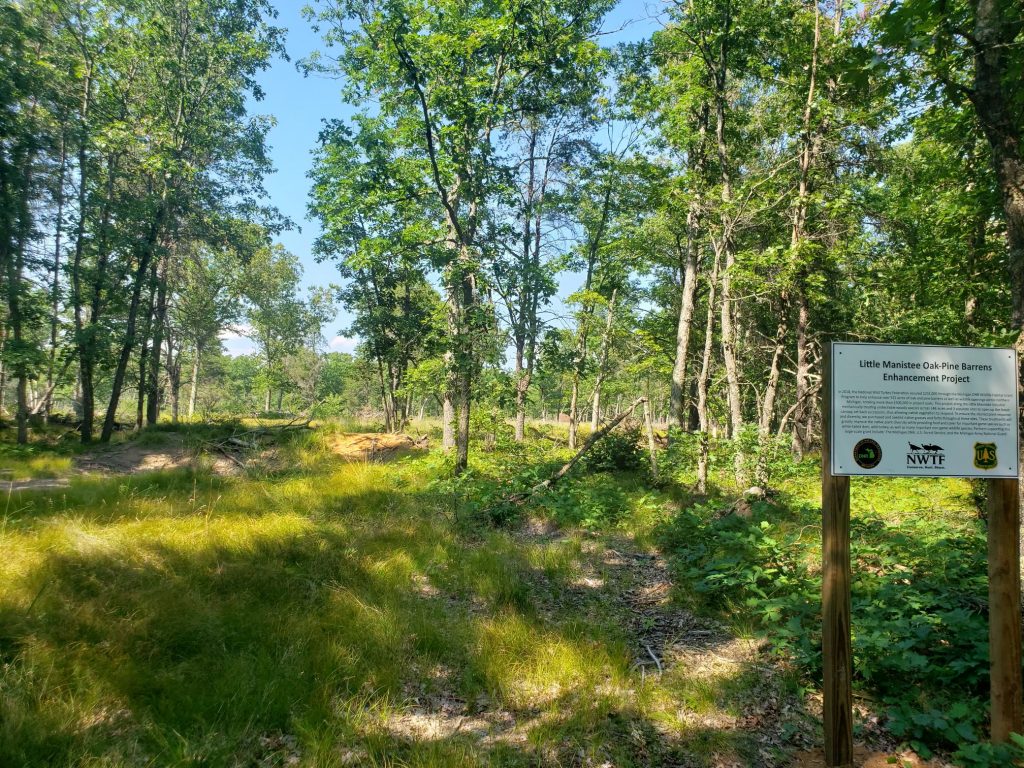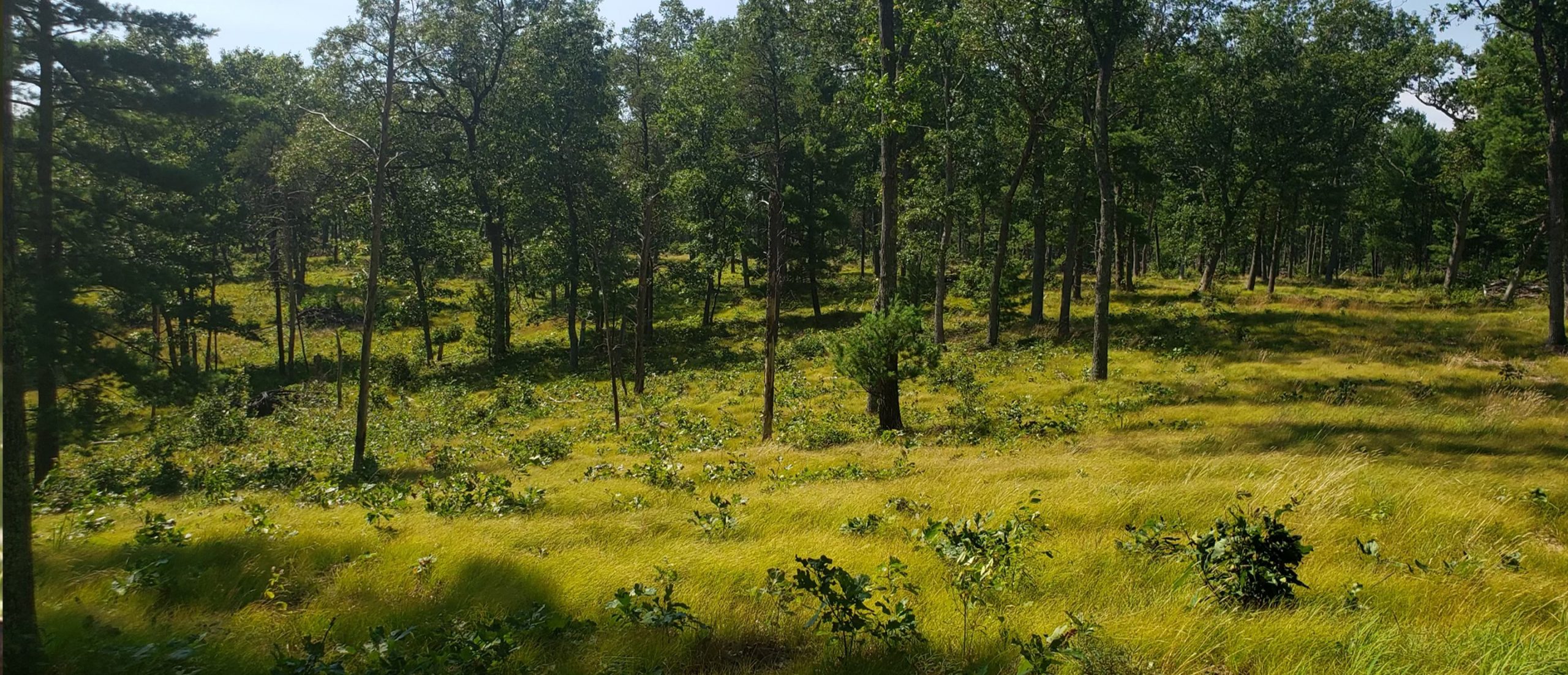Rare Ecosystem Restoration Underway
Hunter-driven grant provides critical funding for pine-barren restoration in NWTF’s Huron-Manistee Focal Landscape.
Pine barrens and pine-oak barrens occur throughout the East and Midwest and are what they sound like, landscapes filled with pine and oak species that are barren for agricultural production. They are characterized by their sandy, acidic soils that hardly retain moisture – terrible for growing most food crops but a haven for wildlife, including wild turkeys, and are one of the rarest ecosystems in Michigan’s Great Lakes Regions.
With their low-growing grassy species, interspersed with mature mast-producing species such as oak, barren ecosystems provide a diversity of habitat for wild turkeys, white-tailed deer and even non-game species like Kirtlands’s warbler, a recently delisted endangered species that relies heavily upon pine barren ecosystems. However, the presence of these rare communities on the landscape is not what it used to be.
“Due to increases in human development, suppression of naturally occurring wildfire and fragmentation of the landscape, we have seen a decline in the abundance and quality of these habitats,” said Ryan Boyer, NWTF district biologist for Michigan, Ohio and Indiana. “We are also losing many of the forested wildlife openings once found within Michigan’s northern forests due to changes with succession tied to a lack of disturbance, as well as an influx of invasive species which out-compete native plants. Ultimately, these factors reduce the quality of these habitat types for many wildlife species.”
While these essential landscapes are increasingly rare, the NWTF is currently working to revitalize oak and pine barren ecosystems back to their former glory throughout Michigan, thanks to a generous $277,000 grant from the MDNR via its Wildlife Habitat Grant Program.
“MDNR’s Wildlife Habitat Grant Program has been a game-changer for us in helping restore imperiled ecosystems, as well as critical habitats for the state’s most popular game species,” Boyer said. “Since 2014, the NWTF has been awarded over $1.45 million to help conserve more than 5,000 acres of critical wild turkey habitat throughout Michigan, like the ongoing pine barren restoration projects.”

The new grant is providing funds to continue the efforts of the NWTF’s Enhancing Pine Barrens and Wildlife Openings across Northern Michigan Project, focusing on projects locations in the Huron-Manistee National Forest, Grayling State Forest and Michigan National Guard’s Camp Grayling.
Eliminating invasive species, planting native seed mixtures, mechanically removing small-diameter trees and other forest management practices will conserve and restore 631 acres of critical barren habitat within the next year.
Each management practice has its unique benefit to restoring the ecosystem. For instance, Boyer noted the importance of establishing herbaceous vegetation.
“Part of this project is focused on maintaining these forested wildlife openings through annual herbaceous plantings, which helps improve the soil health, while offering forage for wildlife species,” he said. “Certain flowering mixes provide a nectar source for pollinators as well. These plantings will also help deter the spread and establishment of non-native and invasive species, such as spotted knapweed, commonly found throughout northern Michigan’s forest wildlife openings.
"Another great aspect of maintaining these openings in the National Guard's Camp Grayling is that it reduces the risk of incidental fires during training activities carried out by our U.S. military. Our work is improving the wildlife value on these openings while also ensuring that our military heroes can focus their efforts on training."
Northern Michigan is subjected to harsh winters and large amounts of snowfall. Projects like this dramatically improve wildlife habitat and the condition in which species enter the winter months, offering a better chance for survival, reproduction and continuing their essential role in the barren ecosystem.
“This work would not be possible without our incredible partnerships,” Boyer said. “Together, we are working to keep Michigan and its natural resources the natural wonder they are.”
